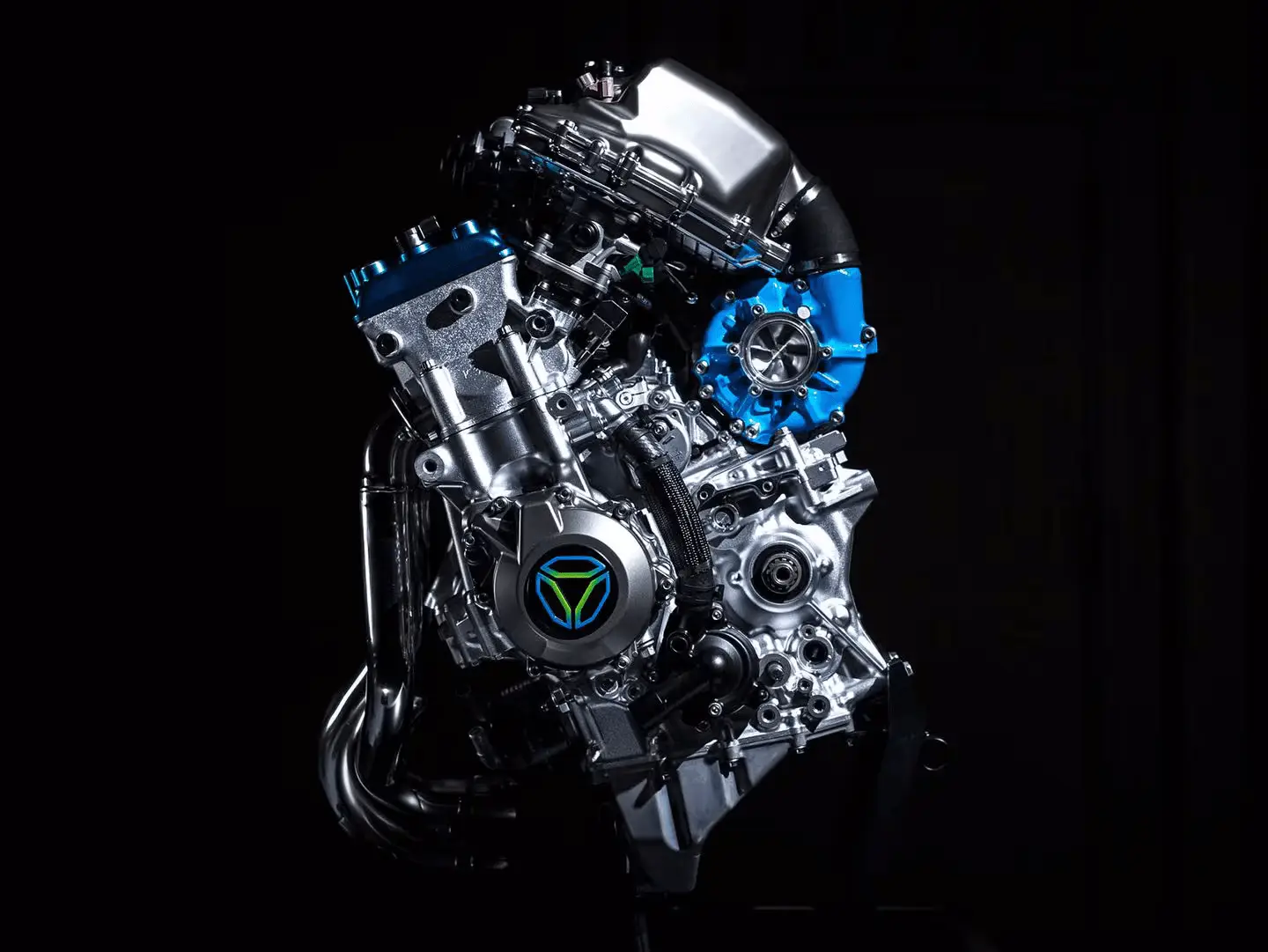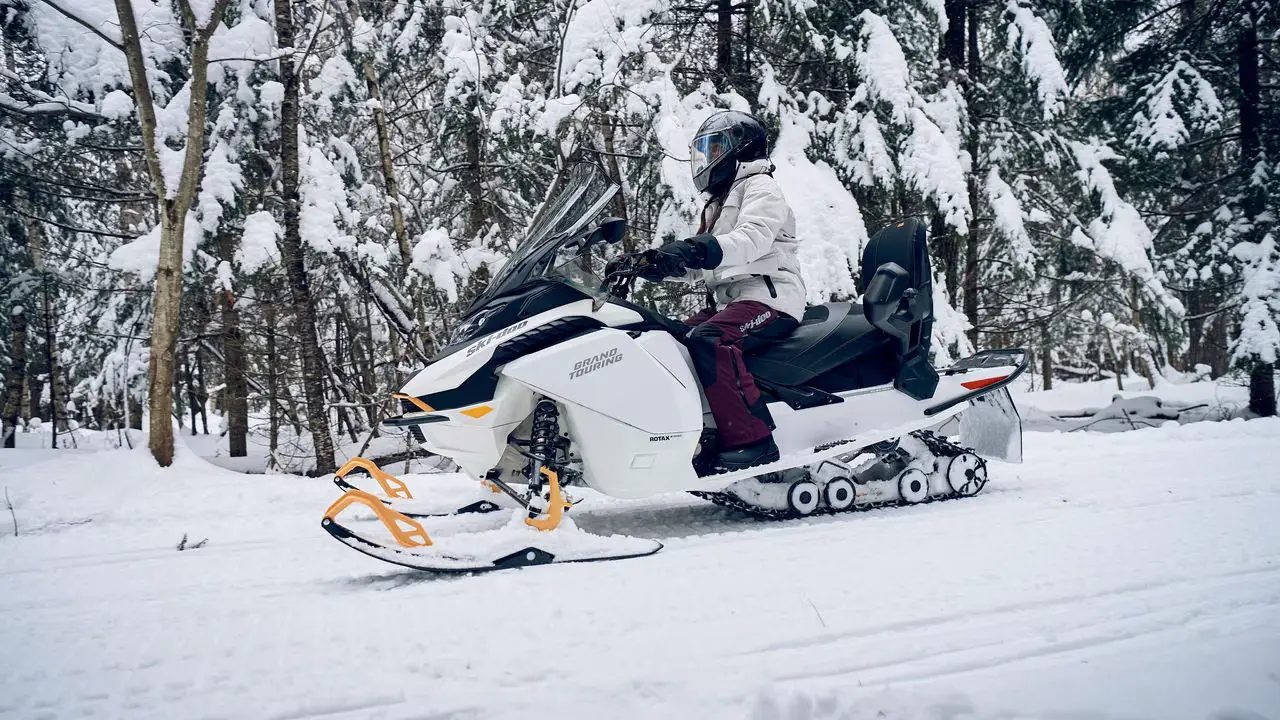Table of contents
ToggleIn recent years, alternatives to fossil fuels have been a hot topic. With the impacts of climate change becoming more apparent in our lives and the 2035 deadline for the automotive industry fast approaching, new technologies are emerging worldwide.
It’s important to note that many countries will ban the sale of gasoline and diesel-powered vehicles starting in 2035. It’s only a matter of time before similar restrictions apply to off-road vehicles. This ultimatum forces snowmobile manufacturers to develop viable alternatives to ensure the sport’s future.
In this article, I’ll briefly introduce the main emerging technologies and the logistical and technological challenges each one faces.

Electric Propulsion
As in the automotive world, electric propulsion is the path some manufacturers are exploring. However, this route is fraught with challenges, particularly for snowmobiles, which are naturally used in winter. Cold weather reduces battery performance, and electric models currently do not meet snowmobilers’ needs in terms of range.
Additionally, creating a network of charging stations that covers the entire territory frequented by snowmobilers is almost impossible—at least not in the near future.
It’s unrealistic to think the industry will produce electric snowmobiles with a range comparable to gasoline models or establish an adequate charging network for long trips within the next decade.

The snowmobile industry is relatively small, with approximately 120,000 units sold annually worldwide. The development and adaptation costs of electric engines are enormous. Even without considering technological challenges, it’s hard to see how this could be viable.
We saw this with Quebec-based Taiga Motors last year. After laying off employees and seeking creditor protection, the company will soon be sold to Vita Power, a British company.
While electric snowmobiles may be suitable for certain applications, it’s hard to believe they’ll dominate trails in the medium term.

Hybrid Propulsion
On the surface, hybrid propulsion is very appealing. It combines the advantages of electric power while addressing its range limitations. Of course, using a gasoline engine doesn’t eliminate emissions completely, but overall emissions could be significantly reduced depending on battery capacity and range. Additionally, electric assistance reduces fuel consumption, resulting in fewer exhaust fumes.
The first challenge is the limited space on a snowmobile to accommodate a gasoline engine, an electric motor, a gas tank, batteries, and the necessary power transmission components.

Weight is another concern. Adding these components would significantly increase the vehicle’s weight, which would greatly affect its dynamics and alter the riding experience.
Finally, even with optimized gasoline engines, hybrid propulsion isn’t a long-term solution. As noted earlier, hybrids will need to be phased out in the years following 2035. This would only serve as a temporary solution. Economically, it’s hard to imagine a manufacturer investing in this technology under these constraints.

Hydrogen Propulsion
There are two main approaches to using hydrogen as a fuel. The first involves equipping vehicles with a hydrogen fuel cell that powers an electric motor.
The second approach is using a hydrogen internal combustion engine. The emissions from such an engine are primarily water vapour. The advantage of this approach is that the design of a hydrogen engine is very similar to that of a gasoline engine, making it more familiar from a technological standpoint.

Notably, four Japanese ATV manufacturers are collaborating on the HySE (Hydrogen Small mobility & Engine technology) project. Kawasaki Motors, Suzuki Motor Corporation, Honda Motor Co., and Yamaha Motor Co. have joined forces to develop hydrogen engines.
The project is advancing rapidly; in less than a year of joint work, an experimental ATV using HySE technology completed the prestigious Dakar 2024 in the Mission 1,000 category. This is a remarkable achievement.
Hydrogen fuel cells have some disadvantages, such as sensitivity to freezing temperatures. Like lithium-ion batteries, this can pose challenges in northern climates. On the other hand, hydrogen engines, much like gasoline or diesel engines, require regular maintenance.

Green Hydrogen?
To minimize or completely eliminate greenhouse gas emissions, it is essential to use green hydrogen. This refers to hydrogen produced using renewable energy sources. While this may seem unrealistic at first glance, TES Canada has proposed a $4 billion project to begin green hydrogen production in Shawinigan by 2028.
Three renewable energy sources—hydraulic, wind, and solar power—will provide the required electricity. The plant will be powered 70% by its own wind and solar farms and 30% by Hydro-Québec energy.
This project is part of a broader initiative, with about a dozen similar projects planned across Quebec in the coming years. Naturally, a distribution and retail network will need to be established.
What Does the Future Hold?
That is the big question. For the automotive sector, 100% electric propulsion seems here to stay for quite some time. Charging station networks are well established, and vehicle range now meets the needs of many drivers.
Hydrogen propulsion seems like a promising solution for heavy transport, such as semi-trucks travelling long distances. It also has the potential to become a viable alternative to personal transport.
However, for off-road vehicles like ATVs, hydrogen engines appear to have the greatest potential to stand out in the coming decade. Range will likely be a decisive factor, giving this technology an edge in the near future.
Of course, a network of hydrogen refuelling stations will need to be established. This is one of the challenges that must be addressed in the not-so-distant future. What do you think?
—— — — —
Poursuivez votre lecture
My first impressions of the Ski-Doo Grand Touring Electric 2024
Hydrogen-Powered VHRs: A Realistic Option?
Takeover of Taiga Motors: What’s Next for Electric Snowmobiles?


